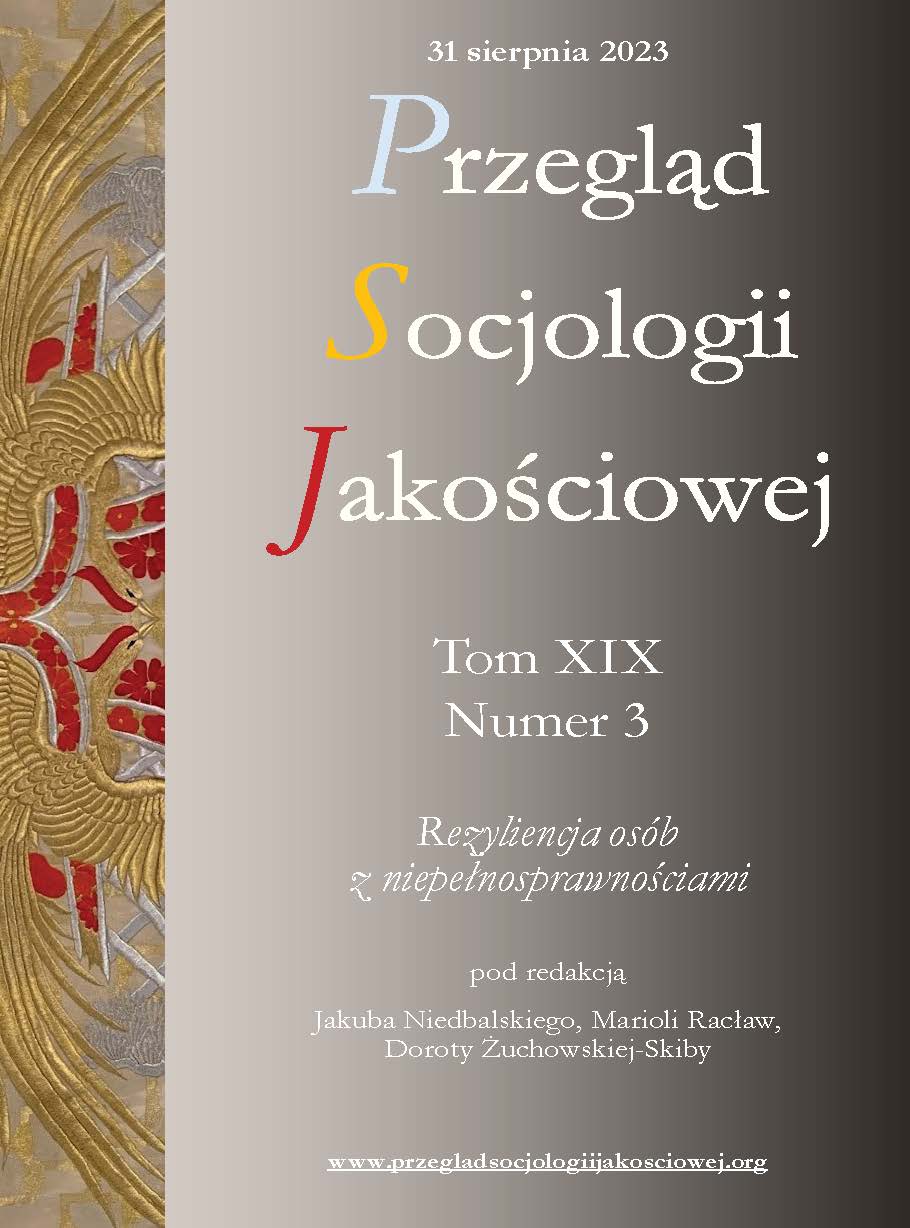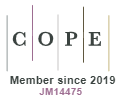Storytelling and the Healing Power of Photography: Rita Leistner’s My Space Project
DOI:
https://doi.org/10.18778/1733-8069.19.3.11Keywords:
Rita Leistner, photography, storytelling, visual story, community buildingAbstract
The aim of the article is to analyze the artistic, social project titled My Space. Stories from Inside the Downtown Eastside Vancouver, created by Canadian photographer Rita Leistner. Through her photographs and interviews, the artist presents the everyday life of a group of drug and alcohol addicted residents of Astoria and Balmoral hotels. The article is based on photographs taken by Leistner and the statements of project participants – both acquired from the artist’s Webpage. Bearing in mind Leistner’s intentions, we tend to present her story in the storytelling narrative. We treat that approach as a useful tool for qualitative data analysis as well as insightful framework to represent a story. This approach has worked well so far in the study of culture and art. Thus, we focus on the content and a form of a story while uncovering its threads looking at it from different dimensions interpreted through the prism of individuals to whom the story relates. We look at the way in which the space occupied by the heroes of the story is being photographed by Leistner, who creates a medium allowing the narrative to connect the present with the past and the future. That medium plays an important role in building a community.
Downloads
References
Abell Peter (2004), Narrative Explanation: An Alternative to Variable-Centered Explanation?, “Annual Review of Sociology”, vol. 30, pp. 287–310, https://doi.org/10.1146/annurev.soc.29.010202.100113
Google Scholar
DOI: https://doi.org/10.1146/annurev.soc.29.010202.100113
Bernstein Basil (1986), Kody i ich odmiany, kształcenie i proces reprodukcji kulturalnej, “Przegląd Socjologiczny”, vol. 34, no. 1, pp. 7–40.
Google Scholar
Britten L. (2022), Balmoral Hotel, the notorious, derelict Downtown Eastside SRO, is set for demolition, https://www.cbc.ca/news/canada/british-columbia/balmoral-hotel-the-notorious-derelict-downtown-eastside-sro-is-set-for-demolition-1.6353332 (accessed: 3.04.2023).
Google Scholar
Campbell Joseph (2008), The Hero with a thousand faces, New Jersey: Princeton University Press.
Google Scholar
City of Vancouver ( n.d.), Downtown Eastside, https://vancouver.ca/news-calendar/downtown-eastside.aspx (accessed: 5.04.2023).
Google Scholar
Curtis Ron (1994), Narrative Form and Normative Force: Baconian Story-Telling in Popular Science, “Social Studies of Science”, vol. 24(3), pp. 419–461, https://doi.org/10.1177/030631279402400301
Google Scholar
DOI: https://doi.org/10.1177/030631279402400301
Dennett Daniel C. (2014), Intuition Pumps and Other Tools for Thinking, New York: W.W. Norton & Co.
Google Scholar
Gelman Andrew, Basbøll Thomas (2014), When Do Stories Work? Evidence and Illustration in the Social Sciences, “Sociological Methods & Research”, vol. 43, no. 4, pp. 547–570, https://doi.org/10.1177/0049124114526377
Google Scholar
DOI: https://doi.org/10.1177/0049124114526377
Graesser Arthur C., Ottati Victor (1995), Why stories? Some evidence, questions, and challenges, [in:] Robert S. Wyer (ed.), Knowledge and memory: The real story, New York: Lawrence Erlbaum Associates, Inc., pp. 121–132.
Google Scholar
Green Melanie C. (2006), Narratives and cancer communication, “Journal of Communication”, vol. 56(1), pp. 163–183, https://doi.org/10.1111/j.1460-2466.2006.00288.x
Google Scholar
DOI: https://doi.org/10.1111/j.1460-2466.2006.00288.x
Jeziorski Ireneusz (2011), Wprowadzenie do antropologii i socjologii wizualnej, Bielsko-Biała: Akademia Techniczno-Humanistyczna.
Google Scholar
Kukiełko-Rogozińska Kalina (2021), Współczesna wojna na fotografiach Rity Leistner, Szczecin: Wydawnictwo Naukowe Uniwersytetu Szczecińskiego.
Google Scholar
Kukiełko-Rogozińska Kalina, Tomanek Krzysztof (2017), Obrazy emocji, emocje świata: fotografie wojenne Rity Leistner, “Kultura Współczesna”, vol. 2, pp. 14–26.
Google Scholar
Leistner Rita (2009), My Space. Stories from Inside the Downtown Eastside Vancouver, Camada, 2009, http://ritaleistner.com/wp-content/uploads/2016/01/myspace_byritaleistner.pdf (accessed: 5.04.2023).
Google Scholar
Leistner Rita (n.d.), About, http://ritaleistner.com/about-2/ (accessed: 5.04.2023).
Google Scholar
Liu Yipeng, Xing Yijun, Starik Mark (2012), Storytelling as Research Method: A West-Meets-East Perspective, “Research Methodology in Strategy and Management”, vol. 8, pp. 143–171, https://doi.org/10.1108/S1479-8387(2012)0000008008
Google Scholar
DOI: https://doi.org/10.1108/S1479-8387(2012)0000008008
Maier Christopher (2008), Creating Community Through Storytelling, https://storynet.org/creating-community-through-storytelling/ (accessed: 5.04.2023).
Google Scholar
McCall Becky, Shallcross Laura, Wilson Michael, Fuller Chris, Hayward Andrew (2021), Storytelling as a Research Tool Used to Explore Insights and as an Intervention in Public Health: A Systematic Narrative Review, “Internetional Journal of Public Health”, no. 66, 1604262, https://doi.org/10.3389/ijph.2021.1604262
Google Scholar
DOI: https://doi.org/10.3389/ijph.2021.1604262
Mitosek Zofia (2011), Teorie badań literackich, Warszawa: Wydawnictwo Naukowe PWN.
Google Scholar
Morgan Sandra, Dennehy Robert F. (1997), The power of organizational storytelling: a management development perspective, “Journal of Management Development”, vol. 16, no. 7, pp. 494–501, https://doi.org/10.1108/02621719710169585
Google Scholar
DOI: https://doi.org/10.1108/02621719710169585
Murdock Maureen (2013), The Heroine’s Journey: Woman’s Quest for Wholeness, Boston–London: Shambhala.
Google Scholar
Muszyńska Anna (2011), Intertekstualność jako forma dialogu międzykulturowego, “Przekłady Literatur Słowiańskich”, vol. 2, no. 1, pp. 295–305, https://journals.us.edu.pl/index.php/PLS/article/view/6484 (accessed: 5.04.2023).
Google Scholar
Ostaszewski Jacek (2007), W pętli zapomnienia: analiza narracyjna filmu „Memento” Christophera Nolana, [in:] Piotr Francuz (ed.), Psychologiczne aspekty komunikacji audiowizualnej, Lublin: Towarzystwo Naukowe, pp. 133–164.
Google Scholar
Polletta Francesca, Chen Pang, Ching Bobby, Gardner Beth (2011), The Sociology of Storytelling, “Annual Review of Sociology”, vol. 37, pp. 109–130, https://doi.org/10.1146/annurev-soc-081309-150106
Google Scholar
DOI: https://doi.org/10.1146/annurev-soc-081309-150106
Slater Michael, Rouner Donna (2002), Entertainment-Education and Elaboration Likelihood: Understanding the Processing of Narrative Persuasion, “Communication Theory”, vol. 12, no. 2, pp. 173–191, https://doi.org/10.1111/j.1468-2885.2002.tb00265.x
Google Scholar
DOI: https://doi.org/10.1111/j.1468-2885.2002.tb00265.x
Striano Maura (2012), Reconstructing narrative: A new paradigm for narrative research and practice, “Narrative Inquiry”, vol. 22, no. 1, pp. 147–154, https://doi.org/10.1075/ni.22.1.09str
Google Scholar
DOI: https://doi.org/10.1075/ni.22.1.09str
Tenore Mallary (2017), Best practices for doing community-driven storytelling, https://www.americanpressinstitute.org/publications/reports/best-practices-community-driven-storytelling/ (accessed: 5.04.2023).
Google Scholar
The Heart Tattoo Society (n.d.), http://hearttattoosociety.com/ (accessed: 3.04.2023).
Google Scholar
Tomanek Krzysztof, Kukiełko-Rogozińska Kalina (2016), Słowa – obrazy – emocje. Wielowymiarowa analiza narracji materiałów tekstowych i wizualnych publikowanych na blogu, [in:] Magdalena Piorunek (ed.), Badania biograficzne i narracyjne w perspektywie interdyscyplinarnej, Poznań: Wydawnictwo Naukowe Uniwersytetu im. Adama Mickiewicza w Poznaniu, pp. 259–274.
Google Scholar
VANDU (n.d.), About VANDU, https://vandureplace.wordpress.com/about/ (accessed: 5.04.2023).
Google Scholar
Williams Val (2008), Cornell Capa: ‘Concerned’ photographer, “Independent”, 29th May, https://www.independent.co.uk/news/obituaries/cornell-capa-concerned-photographer-835820.html (accessed: 5.04.2023).
Google Scholar
Wilson Julia (2009), My Voice, My Space, Our Community: A Vancouver DTES Community Action Project, Unpublished master’s thesis, Burnaby: Simon Fraser University, https://summit.sfu.ca/item/9683 (accessed: 5.04.2023).
Google Scholar
Published
How to Cite
Issue
Section
License

This work is licensed under a Creative Commons Attribution-NonCommercial-NoDerivatives 4.0 International License.














